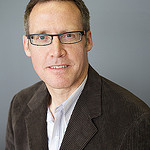Linking local business with mining companies in north central BC

1 of 2Fraser Deacon, chair of the Northern Interior Mining Group. — Photo courtesy Geotech Drilling2 of 2Dave Forshaw, immediate past chair of the Nor
1 of 2Fraser Deacon, chair of the Northern Interior Mining Group. — Photo courtesy Geotech Drilling
To members of the Northern Interior Mining Group, recognizing and acting upon an opportunity is key to helping reverse a regional economic downturn.
Formed in north central British Columbia in 2008 by business people and public sector officials alarmed by a decline in the forestry industry, the group held meetings and sought professional advice to help revive a tottering economy.
With the eventual aid of a facilitator, the group chose the area’s burgeoning mining industry as the possible stimulant for new regional business activity. And with Western Economic Diversification Canada seed money, group members began to build the necessary communication between area businesses and mining companies to help determine what the companies’ needs were.
Today, the NIMG’s fourth annual Directory Services & Supply Guide has over 150 members and the organization hopes its directory publisher will launch the first annual NIMG magazine late this summer or early fall.
The NIMG has also recently completed a contract with its directory publisher to administer the NIMG website, plans to participate in or sponsor two major mining-related events this spring and fall, and hopes to improve relationships with similarly minded organizations in north central British Columbia to support and promote area mine development, possibly north to the Yukon and even beyond.
That’s not bad for a group of volunteers that came together under grim circumstances only five years ago.
The NIMG’s new chair, Fraser Deacon, said participants’ experience with the organization has taught them one thing above all else.
“With the NIMG, if the economy fails us or if anything fails us, the important thing is for us to work together,” Deacon said. “Because the world is always changing. We’re going to always be faced with new ideas, new concerns. We’re going to have to work together if we want to survive and prosper.”
The fact a mining boom coincided with a crisis in the north central British Columbia forestry industry—due to the mountain pine beetle, automation and overproduction—didn’t mean area businesses would be automatically rescued from an economic downturn, said the NIMG’s immediate past chairman, prospector Dave Forshaw.
“I’ve always grown up around mining,” Forshaw said. “I understand that mining is great. But unless the services and the communities take advantage of it and understand the opportunities and want to get some value from it, mining doesn’t do a lot for the communities.”
Getting people to realize just how much the mining industry could help the area’s economy was not easy. Deacon said a study done by business advisory firm Meyers Norris Penny (now MNP) had identified mining as a possible driver for the area’s economy years before the NIMG’s birth, but few businesses had acted on it.
As future NIMG leaders struggled to determine how best to save their area’s economy, Deacon heard about a City of Edmonton employee named Lori Schmidt who had helped some of that city’s business sectors. Schmidt advocated the concept of “clusters” and future NIMG leaders used some seed money to bring her to speak to them.
At a 2008 meeting in Prince George, Schmidt related her experiences in identifying and developing clusters in Edmonton. A cluster is a network created by an economic driver or wealth generator, in which specific businesses supply the driver while secondary firms supply the first set of businesses.
Deacon, Forshaw and others became sold on clusters. That included a man involved with Terrane Metals, the company that then owned the future Mount Milligan copper-gold mine property 155 kilometres northwest of Prince George.
Meeting attendees began a campaign to promote cluster development initially based on the development of Mount Milligan. Group members began to visit area communities to explain the concept to business people.
Again using seed money, Deacon and Forshaw attended NIMG’s first AME BC Mineral Exploration Roundup Conference in Vancouver in 2009 to promote their organization. Seed money also paid for the inaugural publication of NIMG’s annual directory in 2010.
Today, Deacon said NIMG has not only sustained but has also been able to grow its membership. In fact, some NIMG members have now developed such a wide range of services and products for the mining industry that companies are contacting them for projects overseas.
NIMG has also recently tweaked its mission statement. It now strives to connect business with not just mines, but all natural resource development projects in northern British Columbia.
Earlier this year, the chief executive officer of Initiatives Prince George said there is $64 billion in resource development planned in British Columbia over the next decade, including pipeline, forestry and large-scale energy projects.




